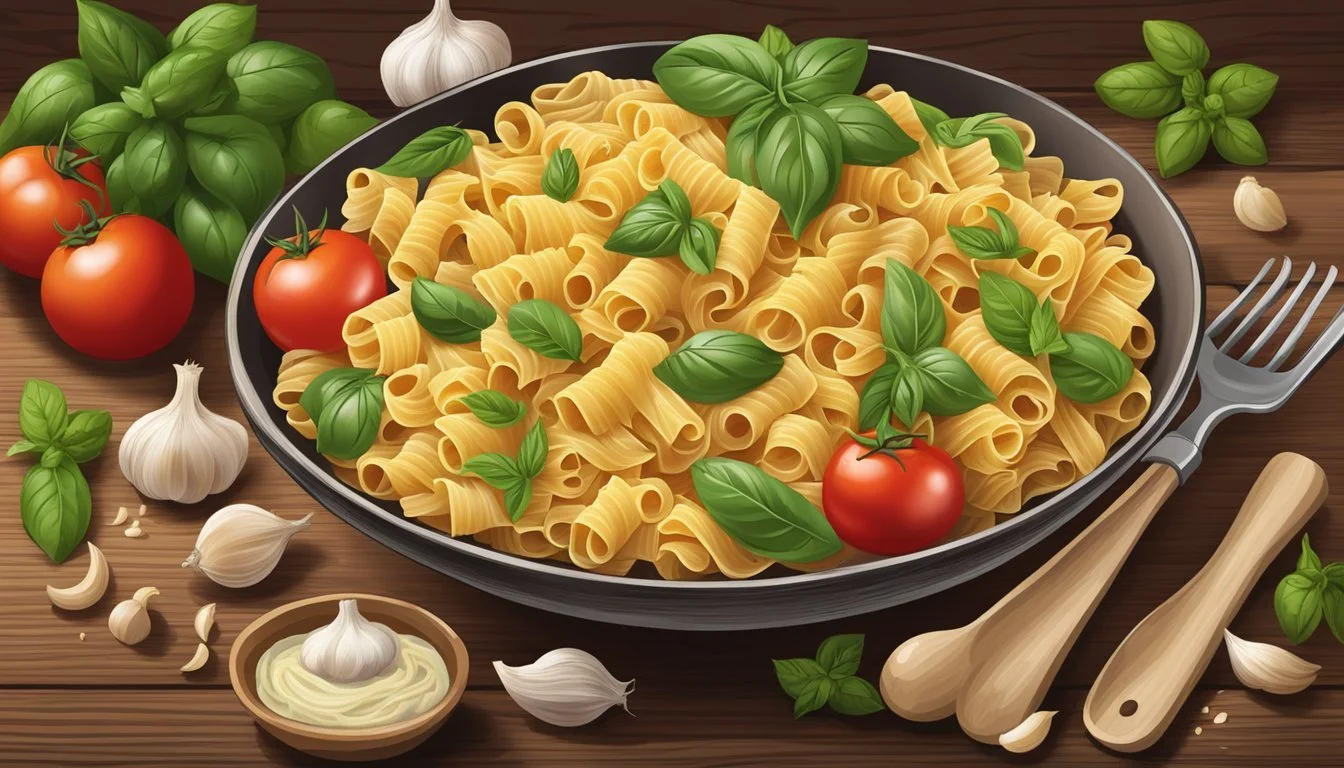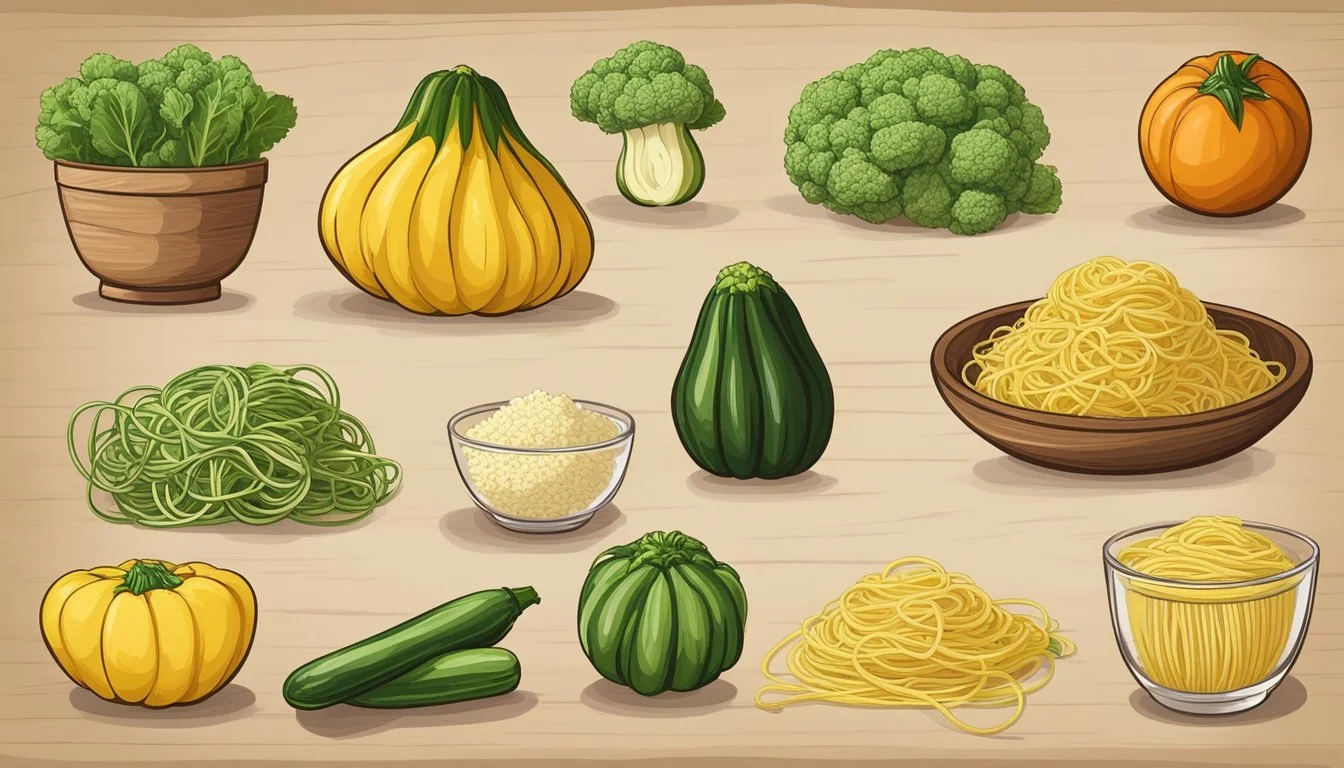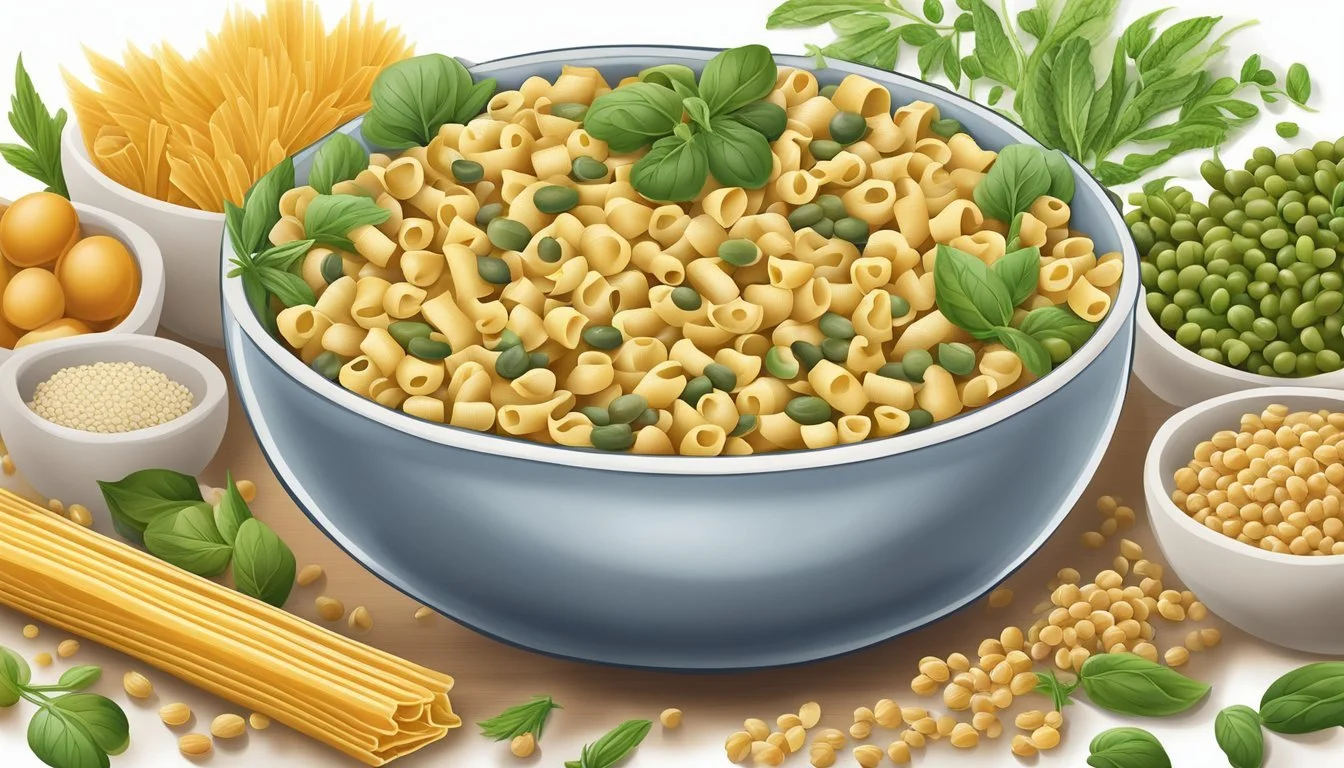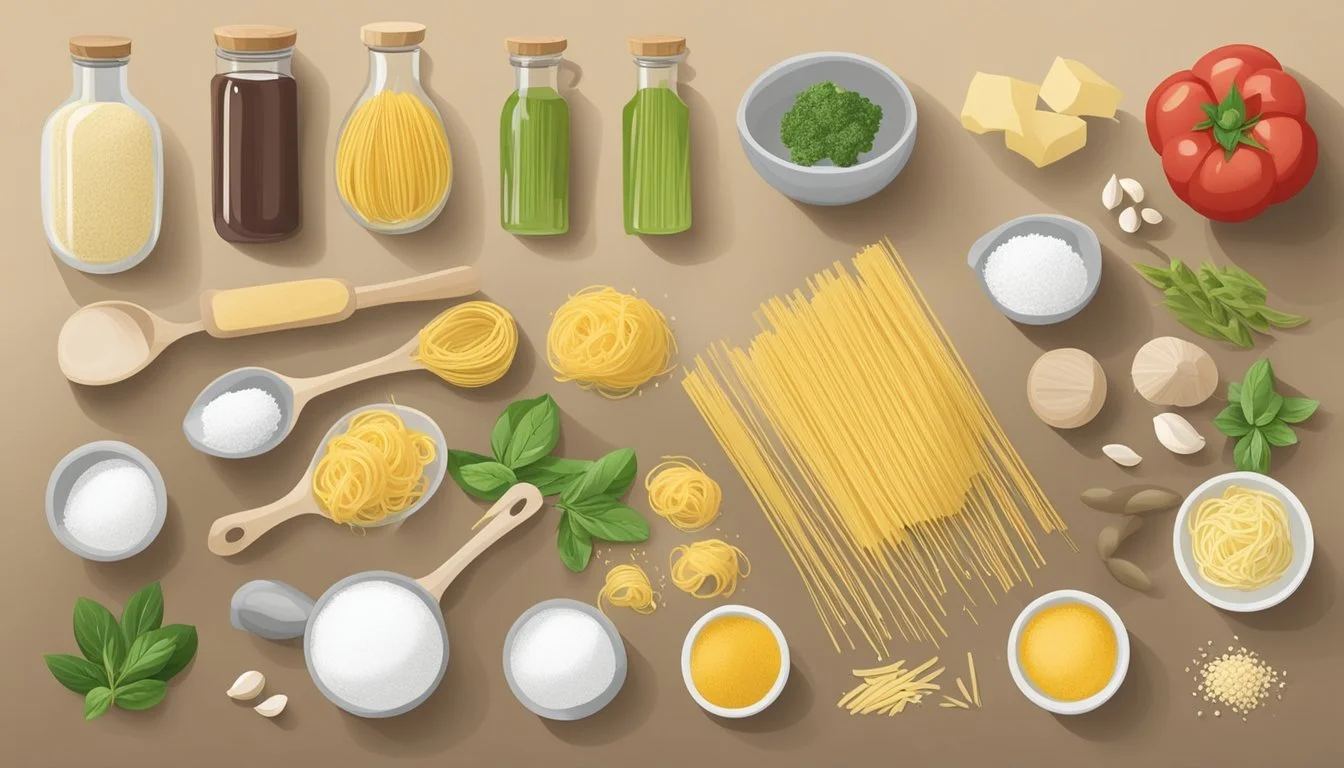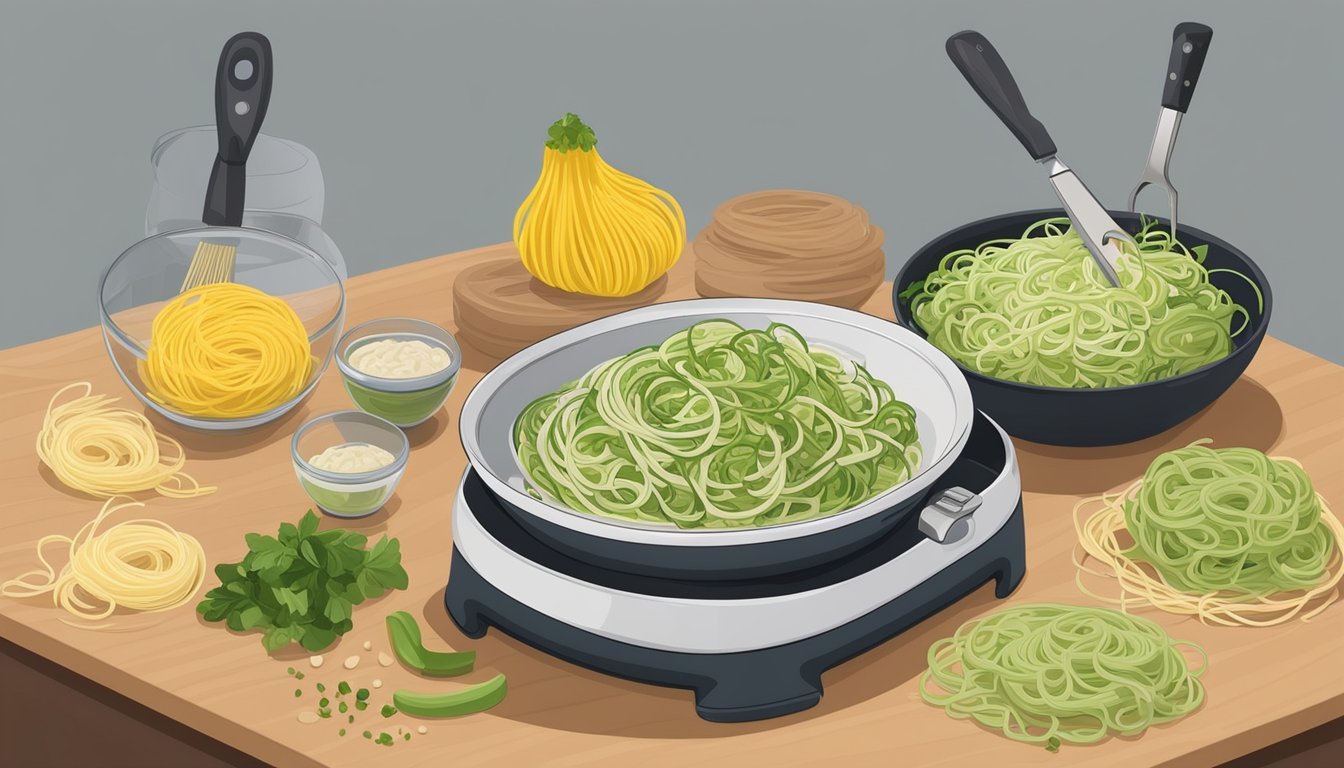Stracci Pasta Substitutes
Top Alternatives for Your Italian Dishes
Stracci pasta (What wine goes well with pasta?), with its ragged, wide strips, offers a delightful texture and hearty bite for various traditional Italian dishes. However, for those seeking healthier options or managing dietary restrictions, a range of pasta substitutes have gained popularity. These substitutes aim to replicate the experience of traditional pasta while providing nutritional benefits or fitting into specific dietary frameworks.
Vegetable alternatives, such as spiralized zucchini or shaved butternut squash, have surfaced as commendable stand-ins for stracci, bringing with them a lower calorie count and a boost of vitamins and nutrients. These substitutes are particularly appealing for their versatility and can be seasoned or sauced in much the same way as regular pasta. The cooking process for these vegetable noodles is also comparable, requiring just a brief period in boiling water to achieve a texture that is tender yet firm.
For those favoring a more grain-based alternative without straying too far from the pasta experience, options like brown rice and quinoa (What wine goes well with quinoa?) pasta present a compromise. These offer a similar texture to traditional pasta with the added benefit of whole grain nutrition. Each of these alternatives aligns with the broader shift towards pasta substitutes, promising a pasta-like dish without the refined flours and higher carbohydrate content of classic stracci.
Understanding Pasta Substitutes
When seeking alternatives to stracci pasta, it's important to consider the benefits these substitutes provide, the variety available, and the nutritional profiles they offer. These factors are pivotal for those with dietary restrictions or health goals.
Benefits of Pasta Substitutes
Pasta substitutes can offer a range of health benefits. Many alternatives are lower in calories and carbohydrates, which can support a low-carb diet and aid in weight loss efforts. For individuals with diabetes, these substitutes often have a reduced glycemic index, helping to manage blood sugar levels. Gluten-free options such as rice pasta and kelp noodles are beneficial for those with celiac disease or gluten sensitivities. Substitutes may also be higher in dietary fiber, aiding in digestive health and potentially lowering the risk of heart disease.
Common Types of Pasta Substitutes
There are several commonly used pasta substitutes, each with its unique texture and taste:
Rice noodles: These are often used in Asian cuisine and can be a great gluten-free option.
Shirataki noodles: Made from the konjac plant, these are very low in calories and carbs.
Quinoa pasta: This provides a good source of protein and essential nutrients like magnesium and iron.
Vegetable spirals: Examples include zucchini or carrot noodles, offering vitamins while being lower in carbs.
Nutritional Comparison
Substitute Calories (per 100g) Carbs (per 100g) Protein (per 100g) Fiber (per 100g) Gluten-Free Rice Noodles Approx. 364 80g 4g 2.2g Yes Shirataki Noodles Approx. 20 <1g <1g 2g Yes Quinoa Pasta Approx. 368 64g 14g 7g Yes Vegetable Spirals Varies Varies Varies High Yes
Substitutes like vegetable spirals can also contribute significant amounts of vitamins, potassium, phosphorus, and other micronutrients, depending on the vegetable used. High protein substitutes like quinoa pasta offer a nutritious alternative for those looking to increase their protein intake while maintaining a balanced diet.
Vegetable-Based Substitutes
When seeking healthier alternatives to traditional Stracci pasta, vegetable-based substitutes offer a range of nutritious and tasty options. These alternatives not only cater to those following a low-carb or gluten-free diet but also add a colorful twist to meals with their various plant-based ingredients.
Zucchini Noodles (Zoodles)
Zucchini is a versatile vegetable often transformed into "zoodles" — a spaghetti-like shape created using a spiralizer. Zucchini noodles are a popular choice for their pasta-like texture and quick cooking time, requiring just 1 to 2 minutes until tender. A single zucchini contains only about 25 calories and is rich in antioxidants and vitamin C, making it an excellent option for those seeking a low-calorie, nutrient-dense pasta substitute.
Spiralized Vegetables
Beyond zucchini, a variety of vegetables can be spiralized to mimic the appearance and texture of pasta. Carrots, beets, and sweet potatoes are all suitable for spiralizing, offering a palette of flavors and nutrients.
Carrots: These provide a slightly sweet taste and crunch, along with a good dose of vitamin A.
Beets: Known for their deep color, beets add an earthy flavor and are great sources of fiber and vitamin C.
Sweet Potatoes: They bring a comforting sweetness and are filled with vitamin A and potassium.
Cauliflower Choices
Cauliflower has emerged as a go-to for those with celiac disease or seeking gluten-free options, due to its neutral flavor and texture that adapts well to various culinary uses. Cauliflower can be processed into rice-like pieces or shaped into a pasta alternative, with every serving being low in carbs but high in vitamins and antioxidants. This cruciferous vegetable is a nutritious stand-in for traditional pasta, complementing sauces and seasonings without overshadowing them.
Legume and Grain Alternatives
When considering Stracci pasta substitutes made from legumes and grains, one looks for options rich in protein, fiber, and essential nutrients. These gluten-free alternatives are excellent for those on a low-carb diet and with gluten sensitivities.
Chickpea and Lentil Pasta
Chickpea pasta is a standout substitute, offering a gluten-free option that is high in fiber and protein. It is made from ground chickpeas and sometimes a blend of other legumes, such as lentils. Aside from bringing a slightly nutty flavor to dishes, it is packed with vitamins, iron, and magnesium. Lentil pasta, similarly, is a nutrient-dense choice that can provide a robust and satisfying taste and texture, closely mimicking traditional pasta.
Chickpea pasta:
Protein: High
Fiber: High
Gluten-free: Yes
Lentil pasta:
Vitamins: Rich
Iron and magnesium: Good sources
Texture: Satisfying
Quinoa and Brown Rice Pasta
Substitutes like quinoa and brown rice pasta offer textures comparable to regular pasta while being suitable for those seeking gluten-free options. Quinoa pasta, often made from a mix of quinoa flour and other ingredients like corn or rice, is high in protein and essential amino acids. Brown rice pasta, made from brown rice flour, delivers a chewy texture and is also a good source of fiber, phosphorus, and other nutrients without the presence of gluten.
Quinoa pasta:
Protein: Complete profile
Phosphorus: Present
Brown rice pasta:
Fiber: High
Chewy texture: Similar to traditional pasta
Ancient Grains and Seeds
Pasta made from ancient grains and seeds, such as those offered by brands like Ancient Harvest, provides a nutrient-packed alternative to traditional pasta. These pastas may include ingredients like amaranth, millet, and teff – all known for their health benefits. They are often appreciated for their unique taste and texture and are a great source of fiber and protein. They are suitable for low-carb diets and offer a gluten-free choice for those with dietary restrictions.
Nutrient-dense: Yes
Unique flavors: Yes
Low-carb and gluten-free: Ideal for dietary restrictions
Unique Pasta Alternatives
Exploring unique pasta alternatives is ideal for those looking to diversify their diet with gluten-free options, lower their carbohydrate intake, or manage diabetes through food choices. Each alternative offers a distinct texture and nutritional profile suited for different culinary needs.
Soba and Rice Noodles
Soba Noodles are a staple in Japanese cuisine, made primarily from buckwheat flour. They are revered for their robust flavor and firm texture, making them a fitting substitute for traditional pasta. Being gluten-free and rich in fiber, soba noodles are a beneficial choice for weight management and those with gluten sensitivities.
Nutritional Profile: High in fiber, gluten-free.
Culinary Uses: Best suited for cold salads or in soups.
Rice Noodles, with their neutral flavor, assimilate well into a variety of dishes. They are particularly prevalent in Asian cooking and come in varying thicknesses from thin vermicelli to thicker styles akin to flat stracciatelle. Rice noodles are a versatile, gluten-free alternative that pairs well with robust and subtle flavors alike.
Nutritional Profile: Gluten-free, low allergenic.
Culinary Uses: Ideal for stir-fries and soups.
Shirataki and Konjac Noodles
Shirataki Noodles are composed of water and a soluble fiber from the konjac plant, resulting in a low-calorie and low-carb option. Their minimal impact on blood sugar levels makes them suitable for diabetic diets and those aiming for weight loss.
Nutritional Profile: Low-calorie, high-fiber, diabetes-friendly.
Culinary Uses: Best rinsed thoroughly and then cooked in liquid to achieve a palatable texture.
Konjac Noodles, similarly to Shirataki, are formed from the konjac plant's root, and they are often used interchangeably. They boast a high-fiber content with a low-calorie count, supporting those on calorie-restricted or weight loss diets.
Nutritional Profile: High in fiber, low-calorie.
Culinary Uses: Absorb flavors well; should be immersed in hot water before adding to dishes.
Specialty Low Carb Options
Low Carb Alternatives have risen in popularity, particularly among individuals adhering to ketogenic and other low-carbohydrate diets. These options frequently incorporate plant ingredients like beans or lentils to create pastas that are rich in protein yet lower in carbohydrates.
Nutritional Profile: Varies, often high-protein, lower in carbs.
Culinary Uses: Substitute for traditional pasta in any recipe needing a low-carb option.
These alternative pastas provide diverse options outside of traditional wheat-based noodles, catering to a broad spectrum of dietary needs, from gluten-free to low-carb diets. Each brings a unique texture and nutritional advantage to the table, ensuring that anyone can enjoy pasta dishes tailored to their health objectives and taste preferences.
Preparing and Cooking Substitutes
When substituting stracci pasta, techniques for cooking and seasoning are crucial to replicate the pasta experience. This includes understanding how to properly cook alternatives to achieve desired textures and how to blend sauces and seasonings to complement these substitutes.
Cooking Techniques
Cooking pasta alternatives requires attention to texture to maintain an al dente feel. For spiralized vegetables, they should be cooked until barely tender, typically 1 to 2 minutes, and then drained. Roasted or steamed substitutes offer a range of textures, from creamy to crunchy, and should be cooked to the point just before they become mushy to preserve structure and allow for effective sauce absorption.
Spiralized Vegetables: Lightly sauté or blanch to retain a firm texture.
Roasted Alternatives: Should be cooked until they are tender but retain a bite.
Sauce Pairing and Flavor Enhancement
The right sauce can transform a pasta substitute. Robust sauces like pesto or marinara work well with hearty alternatives, adhering well and infusing flavor. For lighter options, a simple blend of lemon, butter, and herbs can be luscious without overwhelming. Nutritional yeast can provide a cheese-like flavor for those avoiding dairy.
Pesto: Ideal for adding a herby and nutty profile suitable for most substitutes.
Cheesy Sauce: Use a creamy, cheese-based sauce for a decadent meal.
A thoughtful addition of spices and herbs can elevate the substitute to a new level.
Textures and Consistency
The goal is to mimic the satisfying chew of pasta with your substitutes. Alternatives like brown rice pasta or quinoa spaghetti aim to replicate this chewiness. When preparing these, they should be tested frequently and removed from heat once al dente to prevent them from becoming too soft.
Quinoa Spaghetti: Boil for around 6-9 minutes for an al dente texture.
Brown rice pasta: Usually requires more cooking time than traditional pasta.
Alternatives should offer a balance of textures, contrasting the smoothness of sauce with a substantive bite from the pasta substitute.
Lifestyle and Dietary Considerations
When selecting substitutes for Stracci pasta, it's crucial to consider dietary restrictions and lifestyle choices. The following subsections provide options that accommodate low-carb and ketogenic diets, vegan and vegetarian lifestyles, and health conditions that require special dietary attention.
Keto and Low-Carb Diets
For those following a ketogenic or low-carb diet, finding a suitable pasta alternative is essential for maintaining ketosis. Low carb pasta alternatives like spiralized vegetables (e.g., zucchini, squash) offer a pasta-like experience with minimal carbohydrates. Ready-made options such as shirataki noodles are high in fiber and have virtually no net carbs, aligning well with a keto diet for weight loss and diabetes management.
Low-Carb Alternatives:
Spiralized vegetables: zucchini, squash
Shirataki noodles
Vegan and Vegetarian Options
Individuals who adhere to vegan or vegetarian diets require pasta substitutes that do not contain any animal products. Quinoa and brown rice pastas are versatile choices that not only fulfill these dietary preferences but are also rich in protein. Soba noodles, typically made from buckwheat, are another suitable option offering sufficient protein content and a distinctive nutty flavor.
Vegan and Vegetarian Alternatives:
Quinoa pasta
Brown rice pasta
Soba noodles
Managing Health Conditions
For people dealing with celiac disease or gluten intolerance, gluten-free pasta alternatives are indispensable. Choices like rice noodles or certified gluten-free options ensure safety without compromising on taste. Those with heart disease or nut and soy allergies should opt for alternatives free from allergens and saturated fats, favoring heart-healthy whole grains and legumes.
Gluten-Free and Allergen-Friendly Alternatives:
Rice noodles (gluten-free)
Legume-based pastas (lentil, chickpea)
Whole grain pastas (if not allergic to gluten)
Pasta Substitutes in Modern Cuisines
Exploration and innovation in the food industry have brought pasta substitutes to the forefront of modern cuisines. These substitutes not only cater to health-conscious consumers but also reflect a blend of global culinary traditions.
Global Influence on Substitutes
The increasing cross-cultural exchange has significantly influenced modern cooking. Asian cuisine provides alternatives like rice noodles and shirataki noodles, which are favored for their gluten-free properties and compatibility with Italian dishes. Italian cuisine, while deeply rooted in tradition, has adopted ingredients like quinoa and lentils to modify pasta dishes, aligning with current culinary trends.
Incorporating Substitutes into Traditional Dishes
Chefs have creatively infused pasta substitutes into traditional dishes. Lasagna can be prepared using thinly sliced zucchini or eggplant, appealing to those reducing carbohydrate intake. Spaghetti enthusiasts might enjoy spaghetti squash as a nutrient-dense alternative. Even penne can be swapped with tubular-shaped grains or vegetables to maintain the dish's integrity.
Traditional Dish: Lasagna
Substitute: Zucchini, Eggplant
Traditional Dish: Spaghetti
Substitute: Spaghetti Squash, Spiralized Vegetables
Traditional Dish: Penne
Substitute: Grains like Quinoa, Sliced Vegetables
Restaurant Trends and Consumer Preferences
Restaurants are diversifying their menus to feature a range of pasta substitutes, largely driven by dining trends and preferences for nutritious options. In response to health-conscious consumers, menus are including dishes where traditional pasta is replaced with legume-based or vegetable noodles. These preferences resonate with today's diners and are often highlighted by editors' recommendations in food industry publications.

